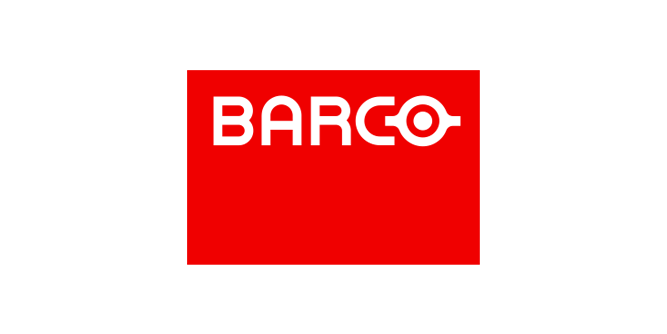2018 was destined to be a year recorded in the history of the film industry. On December 7th, the world's first 14-meter-wide Samsung Onyx LED cinema screen officially found its place in Hall 9 of the Capital Cinema in Xidan, marking the arrival of the era of large-scale LED cinema halls. The Capital Cinema not only has a long history but has consistently been at the forefront of film technology applications in the industry. It was one of the first cinemas in China to install the DTS sound system.

The introduction of the globally massive LED screen has once again made the Capital Cinema a focal point in the industry spotlight. LED screens boast technical advantages such as high brightness and high contrast, making them competitive and viable alternatives to laser projection technology. People can now watch images without dimming the lights, opening up new possibilities for applications in film projection, eSports, live sports events, various conferences, and meetings.
Simultaneously, the use of LED cinema screens, which are non-perforated screens, means that speakers cannot synchronize the traditional way of achieving sound-image positioning in films. The application of LED screens has sharply juxtaposed images with current sound technology. While appreciating high-brightness, high-contrast 4K images, audiences certainly do not want to sacrifice audio experiences.
Although current immersive sound technology can achieve three-dimensional spatial sound effects in the production and playback stages in environments with perforated screens, for the standard commercial film industry, it is currently challenging to pre-adjust to the LED screen environment on both the production and playback sides while accommodating various venue conditions. The flexible use of immersive sound technology to preprocess challenges brought about by the use of non-perforated screens is not yet feasible.

Faced with these challenges, QSC, based on the Q-SYS™ platform, introduced a proprietary matrix virtual sound image synthesis technology for LED screen projection applications, bringing a new and revolutionary solution. This technology perfectly addresses the issue of LED screens not producing sound from the image position. Its application is one of the highlights of this project and has received unanimous praise from industry experts and audiences. The technology synthesizes the sound images of the three main speakers installed below and above the LED screen into the traditional left, center, and right screen channels behind the screen. These three left, center, and right channels can be moved on the screen plane according to the actual venue conditions through tuning methods to achieve an excellent sound-image correspondence.
Once the virtual work of the three "channels" on the LED screen is completed, it is equivalent to "installing and tuning" the speakers for immersive sound technologies such as DTS:X. At this point, DTS:X immersive sound technology can more conveniently reconstruct the three-dimensional sound field environment and achieve precise three-dimensional spatial positioning. When larger-sized LED screens emerge in the future, this matrix sound image synthesis technology can be applied to large screens, combining L/C/R, L/Lc/C/Rc/R, and other custom screen main speaker formats, greatly facilitating the application of LED display technology. The project adopted the QSC DCS series screen main speakers. Due to the modular design of QSC screen channel speakers, the original net height of around 1.9 meters is reduced to less than 1 meter after the horizontal assembly of the bass and mid-high modules, effectively reducing the space requirements for installing speakers by the LED screen.
In addition, the QSC speaker box's mid-high-frequency module comes with a certain tilt angle when placed normally, designed specifically for cinema applications. Under normal conditions, the box does not need to be tilted at a certain downward angle towards the audience area to obtain perfect sound coverage, saving installation depth space. For LED screen installations with front maintenance, it can save more space for the owners. In the signal processing stage, the ambient sound server outputs the DTS:X digital audio signal to the QSC professional cinema processor Core110c for full audio processing, then converts it into a network signal transmitted to the backend QSC DPA series multi-channel network amplifier. Due to the use of an all-digital, all-network architecture, the QSC Q-SYS system platform can monitor the status of any signal source, speaker, or amplifier in real-time and set up automatic channel backup plans as needed.
Another revolutionary highlight worth noting is the setup of a VIP room behind the venue. Due to the use of LED screens, traditional projection rooms are no longer needed, fully utilizing this space. In the past, VIP areas in cinemas were mostly set up as comfortable areas with sofas for two or more people, lacking real privacy. However, the VIP room in this project is physically isolated from the main projection hall, using QSC AD series speakers paired with DPA series network amplifiers to create a 7.1 surround sound system in a private space. Audio signals are sent separately through the network by the QSC Core processor. If this VIP room needs to upgrade to an immersive sound system or be compatible with karaoke functions, it only requires adding speaker amplifier channels and karaoke on-demand equipment according to the budget. The QSC Core processor can fully create an independent multifunctional audio-visual entertainment system for the VIP room while processing conventional DTS:X immersive sound in the main projection hall. It can also provide different levels of control permissions to the audience in the room to change some settings, such as seat, air conditioning, and lighting control, significantly improving the comfort of watching movies.
The Capital Cinema LED projection hall is an innovative and revolutionary attempt at integrated film projection technology, and the experience and technological achievements can continuously be enhanced and optimized in future LED projection systems, greatly improving the cinema viewing experience and the potential for multifunctional applications in cinema spaces.


















